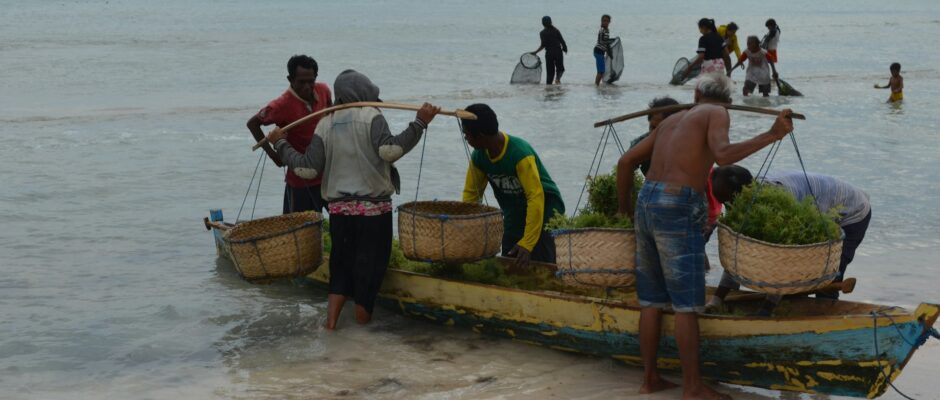Revitalizing India’s Seaweed Industry: New Guidelines for Importing Live Seaweeds
In a pivotal move to enhance the development of seaweed enterprises, the Ministry of Fisheries, Animal Husbandry and Dairying has notified the ‘Guidelines for Import of Live Seaweeds into India’. This initiative is designed to bolster the economic prospects of coastal villages, ensure livelihood sustainability for the fisher community, and uphold environmental protection and biosecurity. Addressing Key Challenges in Seaweed Production Currently, India’s seaweed industry faces significant challenges, including the limited availability of high-quality seed materials and the degradation of seed quality, particularly for the widely farmed Kappaphycus species. These new guidelines aim to address these issues by facilitating the import of high-quality seed materials or germplasm from abroad, enabling domestic multiplication and ensuring farmers have access to quality seed stock[1][3][5]. Pradhan Mantri Matsya Sampada Yojana (PMMSY) The PMMSY, a flagship scheme of the Government of India, is at the forefront of this initiative. The scheme aims to revolutionize the seaweed sector by increasing India’s seaweed production to over 1.12 million tonnes by 2025. Key initiatives under PMMSY include the establishment of a Multipurpose Seaweed Park in Tamil Nadu, with a total investment of Rs 127.7 crore. This park is expected to significantly strengthen seaweed farming activities in the region[1][2][5]. Comprehensive Regulatory Framework The guidelines outline a clear and transparent process for importing live seaweed, ensuring strict adherence to biosecurity and environmental protection. Here are the key components of the regulatory framework: Promoting Sustainable and Responsible Cultivation The guidelines are designed to encourage environmentally sustainable and economically beneficial seaweed cultivation. The import of new seaweed strains will stimulate research and development, leading to enhanced production of various seaweed species, including red, brown, and green algae. This will pave the way for the development of downstream seaweed processing and value addition enterprises, creating additional livelihood opportunities in coastal villages and boosting the country’s exports[1][2][5]. Potential and Impact India has the potential to produce around 9.7 million tonnes of seaweed per year, as identified by the Central Marine Fisheries Research Institute (CMFRI). However, current production stands at a mere 34,000 tonnes, which is only 0.01% of global production. These new guidelines aim to bridge this gap by promoting domestic seaweed cultivation and reducing reliance on imports[4][5]. In conclusion, the ‘Guidelines for Import of Live Seaweeds into India’ mark a significant step towards revitalizing the seaweed industry in India. By ensuring the safe and responsible importation of high-quality seed materials, these guidelines will contribute to the socio-economic upliftment of coastal communities, enhance environmental sustainability, and drive economic growth in the sector.

